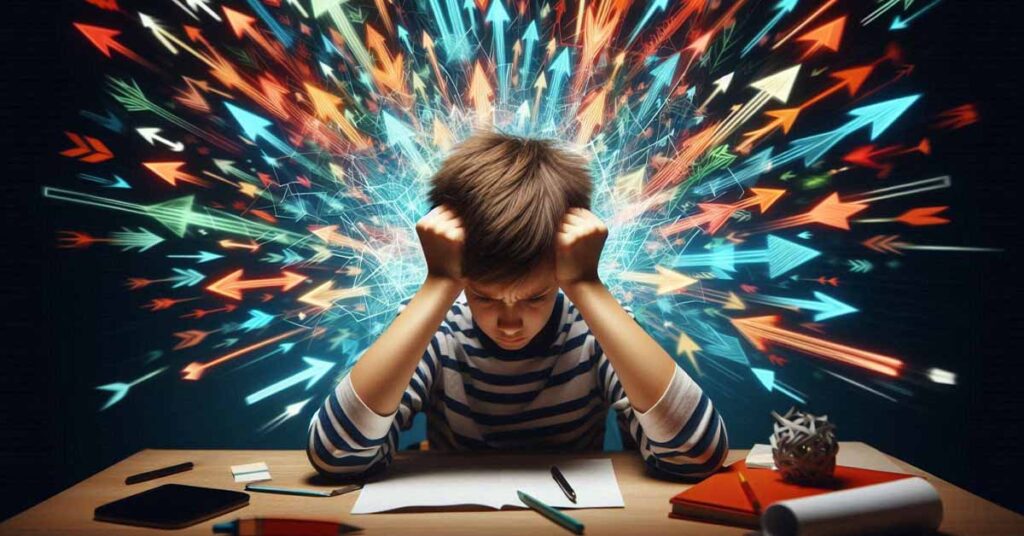Blogs

How Sleep-Disordered Breathing Could Be Fueling ADHD Symptoms
Introduction
Is your child struggling with focus, impulsivity, or hyperactivity during the day but still waking up tired and moody? It might not be “just ADHD.” More and more evidence points to Sleep-Disordered Breathing (SDB) as a hidden driver of ADHD-like symptoms, especially in children.
What many parents and caregivers don’t realize is that poor sleep quality caused by interrupted breathing can directly affect brain development, behavior, and attention span. The good news? This condition is treatable. And in some cases, improving sleep can reduce or even eliminate the need for ADHD medications.
Table of contents
- What Is Sleep-Disordered Breathing?
- ADHD and SDB: A Symptom Overlap
- The Role of Oxygen and the Brain
- The Airway-Focused Orthodontist’s Role in Identifying Sleep-Disordered Breathing (SDB)
- Conclusion
- FAQ
What Is Sleep-Disordered Breathing?
Sleep-Disordered Breathing (SDB) is a range of conditions that cause abnormal breathing patterns during sleep. This includes everything from mild snoring to severe obstructive sleep apnea. Children with SDB often experience frequent arousals from sleep, even if they don’t fully wake up, leading to fragmented and non-restorative rest.
Common signs of SDB in children:
- Snoring or noisy breathing at night
- Sleeping with the mouth open
- Restless or sweaty sleep
- Bedwetting
- Nighttime teeth grinding (bruxism)
- Daytime fatigue or irritability
- Trouble waking up in the morning
ADHD and SDB: A Symptom Overlap
SDB and ADHD can look very similar on the surface. A child who’s not getting quality sleep may be:
- Fidgety and unable to sit still
- Easily distracted
- Emotionally reactive
- Forgetful
- Struggling in school
These symptoms mirror those of ADHD, leading to potential misdiagnosis. In fact, many children labeled with ADHD may actually be experiencing the behavioral effects of poor sleep.
The Role of Oxygen and the Brain
When a child’s breathing is compromised during sleep, it can lead to intermittent drops in blood oxygen. Over time, this disrupts brain development, particularly in areas involved with:
- Executive functioning
- Focus and attention
- Mood regulation
The result? A tired, overstimulated brain trying to compensate with hyperactivity and distractibility.
The Airway-Focused Orthodontist’s Role in Identifying Sleep-Disordered Breathing (SDB)
Airway-focused orthodontists play a crucial role in identifying signs of Sleep-Disordered Breathing (SDB) by evaluating craniofacial development, jaw alignment, and breathing patterns. Through comprehensive assessments and early intervention strategies, they can detect issues such as narrow arches, mouth breathing, tongue posture problems, and underdeveloped jaws often long before other symptoms become clinically obvious
If the child/adult is showing ADHD symptoms ,make sure you rule out airway problems and disturbed sleep breathing. If the obstruction is diagnosed, in children we expand upper arch( maxilla ) with RME and in adult patients we expand with MSE ( maxillary skeletal expander) to facilitate nasal breathing. So they will get deep restorative sleep and will reduce the symptoms of ADHD.
Restful sleep plays a critical role in brain development and behavior regulation. Many children diagnosed with ADHD symptoms may actually be experiencing sleep-disordered breathing. By correcting airway issues, we help improve focus, behavior, and overall brain function making this an effective ADHD treatment without medication. This natural approach targets the root cause rather than masking symptoms, offering lasting benefits for both children and adults..
Conclusion
Sleep-Disordered Breathing is more than just snoring; it’s a hidden issue that can deeply affect a child’s daily behavior, emotional regulation, and long-term development. If your child is showing signs of ADHD , before starting adhd treatment for kids —it’s time to ask a new question: “How well is my child breathing while they sleep?”The right diagnosis changes everything. And it might start with something as simple as a dental exam.
Take the First Step Toward Better Sleep and Behavior!
Book Your Consultation Today
Frequently Asked Questions
Yes, many symptoms overlap. In some cases, when SDB is treated, children no longer meet the criteria for ADHD.
Absolutely. Dentists trained in airway health can identify early signs of SDB and offer solutions.
Yes. Using a Maxillary Skeletal Expander (MSE) to widen the upper jaw can improve breathing during sleep, offering a natural ADHD treatment for adults by addressing one of the root causes.
